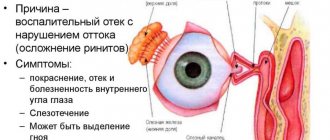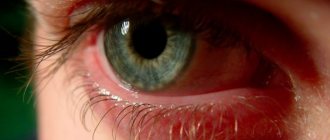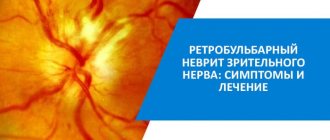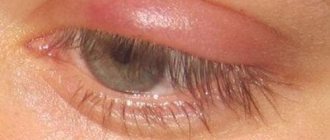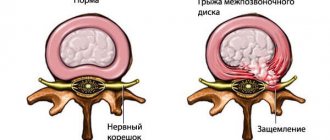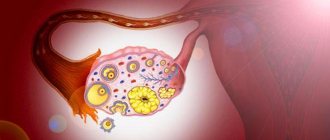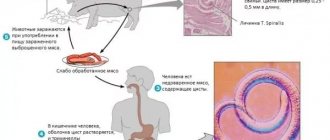General information
Pinching of the sciatic nerve (compression) is a syndrome of its compression by surrounding tissues, characterized by a specific symptom complex with motor, pain and trophic disorders in the innervation zone. Since the sciatic nerve is the largest peripheral nerve, including in terms of length (Fig. below), its pinching can occur at various levels.
The sciatic nerve originates in the sacral plexus and is formed by branches of the lumbar and sacral (L4-L5/S1-S3) spinal nerves. It passes along the inner surface of the small pelvis and exits through the pyriform opening. It passes through the gluteal muscles and exits to the back of the thigh, where it is covered by the biceps and adductor muscles and the thigh muscle. In the region of the popliteal fossa it is divided into the peroneal and tibial nerves. Innervates the biceps, semitendinosus and semimembranosus muscles of the thigh.
Compression disorders of the sciatic nerve are most often caused by the vertebral factor, that is, pathological changes in the ligamentous-articular structures and intervertebral discs of the lumbosacral spinal column (intervertebral disc herniation spinal canal stenosis osteochondrosis , spondylolisthesis , etc.).
However, in some cases, compression of the sciatic nerve is caused by an extravertebral factor - pinching of the nerve between the spastically contracted piriformis muscle and the sacrospinous ligament (Fig. below) or in another variant of the development of the sciatic nerve (when the nerve passes directly through the muscle) - compression of the sciatic nerve by the altered piriformis muscle.
Compression of the sciatic nerve by the piriformis muscle occurs through the mechanism of tunnel syndrome and forms specific clinical manifestations, which are included in the concept of “piriformis muscle syndrome”, and in everyday life - “pinched nerve in the hip joint”, which is the subject of this article. Tunnel neuropathy to peripheral nerve lesions of non-inflammatory origin that develop under the influence of compression and ischemia.
First aid and treatment
So, you have severe pain. The patient should lie down on the bed (the mattress must be hard!) and stop any movements until the discomfort subsides. The main rule is peace and only peace, prohibition of any stress.
They fight sciatica comprehensively. How to treat inflammation of the sciatic nerve? The complex includes: bed rest, taking pills and procedures. They are selected individually for each patient.
Even if you assume how to treat inflammation of the sciatic nerve, drug treatment will be explained to the patient in detail only by his attending physician. Non-steroidal anti-inflammatory drugs, muscle relaxants and vitamins are usually prescribed. Additionally, ointments and gels are recommended. Warming up is also good, including compresses, electro- or phonophoresis.
Massage is one of the components of complex treatment. It is done after the acute pain goes away. And you shouldn’t give up physical therapy. The exercises are also different for all patients. Some need to be done immediately, just in the very first days of the disease and right in bed. Swimming in the pool is also useful. Water reduces pain and relieves muscle spasms.
When considering how to treat inflammation of the sciatic nerve, doctors do not rule out surgery. But only if conservative methods did not help.
Pathogenesis
The development of compression of the sciatic nerve in piriformis syndrome is most often based on a reflex factor that occurs as a result of the development of swelling of the tissue between the sacrospinous ligament and the contracted (spasmodic) piriformis muscle, which causes irritation of the sciatic nerve. Constantly released during spasm of the piriformis muscle histamine , prostaglandin , and bradykinin contribute to the development of the inflammatory process and the formation of a vicious circle “spasm - pain - inflammation”.
Symptoms
The sciatic nerve is the largest nerve in the human body and is responsible for the motor reflexes of the lower body. Originating in the sacrolumbar spine, the nerve stretches down, branching into the area of the hips, knees, ankles, legs, feet and phalanges of the fingers. Its damage instantly affects the mobility and sensitivity of the lower extremities and the functioning of the pelvic organs. In order not to become a hostage to such a situation, it is good to have comprehensive information about sciatica, symptoms and treatment at home.
Making an accurate diagnosis is within the competence of the doctor, and it is advisable to immediately contact a medical facility at the first suspicion of sciatica. The main signs of inflammation of the sciatic nerve are:
- Pain in the gluteal area and the back of the legs. Usually, unpleasant sensations are identified on both sides, but where the source of inflammation is located, the pain is more intense. The direction of pain is from top to bottom. Coverage – buttocks, lower back and thigh.
- Difficulty bending and straightening the body.
- Increased pain when trying to turn the torso to the sides.
- Piercing pain when leaning on a limb in which there is an inflammatory process.
- Involuntary urination and defecation that occurs as a result of acute pain.
- Increased body temperature, especially at the site of inflammation.
- Muscle pain and spasms.
- Intolerance to the slightest physical exertion.
- Hyperemia and swelling of the skin at the site of inflammation.
- Feeling of numbness in the lower extremities, muscle tissue atrophy.
Inflammation of the sciatic nerve is always a consequence. To get rid of pain, it is necessary to identify the specific cause of sciatica and begin to eliminate it. Neuritis of the sciatic nerve can be provoked by:
- Pathologies of the musculoskeletal system, diseases of the spine.
- Hypothermia of the body.
- Excessive physical activity.
- Muscle spasms.
- Thrombosis.
- Abscesses.
- Tick-borne borreliosis.
- Fibromyalgia.
- Third trimester of pregnancy.
- Infectious diseases (flu, tuberculosis, etc.).
Causes
The reasons for the development of persistent pathological spasm of the piriformis muscle and changes in it (thickening of its abdomen) may be:
- Myofascial pain syndrome caused by injuries of various types (unsuccessful injections of drugs, bruise/strain of the pelvic muscles).
- Chronic static/dynamic overload (staying in one position for a long time, high physical stress on the pelvic muscles).
- Twisted pelvis syndrome of various origins (different lengths of the lower limbs, S-shaped scoliosis ).
- Blockade of the function of the sacroiliac joint.
- Pathology of the hip joint ( coxarthrosis ).
- Diseases of an infectious-inflammatory nature (gynecological diseases)/pathology of the urogenital zone, contributing to reflex spasm of the piriformis muscle.
- Hypothermia of the pelvic area.
- Vertebrogenic pathology ( osteochondrosis of the lumbosacral region , lumbosacral dorsopathies , lumbar stenosis ).
Causes of inflammation
Before we find out how to relieve pain, let's find out the reasons for its occurrence. It is not uncommon for the process of inflammation of the sciatic nerve to form after the appearance of an intervertebral hernia. It is worth noting the following common causes of sciatica:
- Traumatic injuries.
- Hypothermia.
- Changing the shape of the vertebrae.
- Infectious diseases.
- Constipation.
- Diabetes.
- Gynecological diseases.
- Intervertebral disc displacement.
- Strong physical activity.
Symptoms of sciatic nerve entrapment
All symptoms of pinched sciatic nerve can be divided into local manifestations and immediate signs of compression of the sciatic nerve. Local symptoms of a pinched nerve in the hip joint are manifested by aching/pulling pain in the buttock, sacroiliac and hip joints, the intensity of which increases with hip adduction, in a standing position, squatting, walking, but in a sitting/lying position with legs apart, the pain decreases . Piriformis syndrome is often accompanied by minor sphincter disorders, manifested by a pause before urination.
Immediate symptoms of compression of the sciatic nerve in the infrapiriformis space and adjacent vessels are:
- Dull pain in the thigh with a characteristic vegetative coloring (feelings of chilliness, burning, stiffness).
- Pain irradiates more often along the innervation zone of the tibial/peroneal nerves or throughout the entire leg.
- Decreased superficial sensitivity, less often the Achilles reflex.
- When the fibers that form the tibial nerve are predominantly involved in the pathological process, the pain syndrome is localized in the calf muscles of the leg and intensifies when walking.
With simultaneous compression of the sciatic nerve of the inferior gluteal artery, a sharp spasm of the vessels of the lower limb is observed, which leads to the development of intermittent claudication with the need for the patient to periodically stop while walking, numbness of the fingers and severe pallor of the skin of the leg.
Sciatica pain
We have looked at the general symptoms and now it’s time to focus on a detailed analysis of the main clinical signs, the main one of which is pain.
As mentioned earlier, painful sensations have different specificity, character, and degree of intensity. Often pain is the only sign of sciatica development.
If we talk about the nature and specificity of pain, during an acute period of sciatica or exacerbations of a chronic type of pathology, the painful sensations are acute. Yes, they can be felt in different ways, with varying degrees of intensity, but in most cases, the pain with sciatica is cutting, stabbing, and makes itself felt so vividly that it is almost impossible to endure. Many patients compare them to an electric shock or a blade penetrating deep into the skin.
It is also worth noting that pain during inflammation of the sciatic nerve is episodic; there are sharp attacks of pain, which are then replaced by severe numbness and a short break. In addition, the outbreaks can be so severe that the person loses consciousness.
There are cases when the pain syndrome is constant. But at the same time, the pain is not so sharp and strong; it can rather be described as dull, aching, weak. At the same time, patients are able to lead a normal lifestyle.
It is also important to understand that outbreaks of both types of pain intensify or occur under certain conditions:
- During physical activity.
- Due to hypothermia.
- Due to prolonged stay in an uncomfortable position.
- Careless or sudden movements, changes in body position.
As for the localization of pain, it is “attached” to the site of the inflammatory process or pinched nerve, in 90% of cases it is one-sided. But there are cases when the painful sensations radiate. For example, lower back pain, radiating to the pelvis and hip area or simultaneously covering the foot and leg.
The quality of a person’s life, his ability to walk, move, and perform everyday activities depend on how severe the pain is. In some cases, it is difficult to even maintain a supine position or sleep.
Treatment of pinched sciatic nerve
In order to treat a pinched nerve in the hip joint, both drug and non-drug therapy methods are used.
Drug treatment for pinched nerves
Treatment is aimed at relaxing the muscles that compress the nerve and relieving pain. Pain relief is achieved by prescribing painkillers and analgesics ( Analgin , Paracetamol , Tramal ). For more severe pain in the acute period, use non-steroidal anti-inflammatory drugs ( Diclofenac , Ketoprofen , Movalis , Meloxicam , Flamax , Dikloberl ).
For extremely intense pain, you can prescribe drugs with a pronounced effect - Tramadol , Dexalgin (intramuscular injections). However, when prescribing non-steroidal anti-inflammatory drugs, one should remember their negative impact on the gastrointestinal tract and, if the patient has corresponding problems, prescribe a short course of selective COX-2 inhibitors ( Nimesulide , Ketorol , Celecoxib , Celebrex ), which do not have a significant effect on the gastrointestinal tract.
Complex therapy for pain relief must necessarily include muscle relaxants, preferably centrally acting ( Baclofen / Tolperisone ), which reduces muscle tension, breaking the formed vicious circle in this disease “pain - muscle spasm - pain”.
An obligatory component of treatment is neurotropic B vitamins, both in the form of individual vitamins and in the form of combined preparations ( Neurobion , Milgamma ). If necessary, to enhance the analgesic effect, medications containing pyrimidine nucleotides ( Keltican ) are prescribed.
To relieve spasm of the piriformis muscle, a blockade can be performed. As practice shows, muscle blockade is an extremely effective method of pain relief. To carry it out, an anesthetic ( Lidocaine , Procaine ) with corticosteroids ( Dexamethasone / Hydrocortisone ) is used.
As a rule, 3-4 blockades are enough (do it once every 3 days). Also, to relieve inflammation, swelling and pain, glucocorticoids can be prescribed by injection directly into the belly of the piriformis muscle. The use of a two-component drug with a pronounced prolonged action ( Depos ) is especially effective.
The drugs can be used in various therapeutic forms. For mild pain outside the acute period, creams, gels and ointments can be widely used, which must necessarily contain an anti-inflammatory component - ketoprofen/diclofenac ( Ketoprofen gel , Dicloran gel , Ketoprom gel , Fastum gel , Diclak gel , Voltaren Indomethacin ointment , Butadione , Ibuprofen ). In the acute period, with severe pain, preference should be given to intramuscular injections.
It is also recommended to prescribe neurometabolic therapy drugs to improve muscle trophism. What injections are given when the sciatic nerve is pinched to normalize trophism? As a rule, Actovegin intramuscularly for this purpose in combination with B vitamins, as well as pyrimidine nucleotides.
In cases of transition from an acute process to a chronic one, manifested by recurrent pain over a long period, to prevent the development of a depressive state, it is necessary to prescribe antidepressants for a period of 3-4 months ( Venlafaxine , Duloxetine , Amitriptyline ).
Non-drug treatment
It is carried out during the period of remission and is aimed at local impact on the muscles of the pelvis and lumbar area (manual correction of the pelvis, myofascial release, deep tissue kinesio-massage, therapeutic exercises) and correction of the muscular-ligamentous apparatus of the muscles involved in the pathological process (post-isometric muscle relaxation, myofascial release , stretching/relaxing and muscle strengthening exercises).
Massage for a pinched sciatic nerve (segmental, classic, connective tissue myofascial massage) is an extremely effective procedure for relieving spasm from muscles and fascia. Post-isometric relaxation of the piriformis muscle is widely used, which is based on hip abduction/external rotation exercises, therapeutic exercises (author’s gymnastics according to Williams), therapeutic swimming, yoga, training on simulators, swimming.
Treatment of a pinched sciatic nerve at home
Is it possible, how to treat and how to treat a pinched sciatic nerve and its manifestations at home - a frequently asked question on various forums. On various web resources, if you wish, you can find many video exercises for pinching the sciatic nerve with comments from the authors, and there is also a special exercise for stretching the pelvic muscles, which is recommended to be performed. Some of their exercises are given above.
However, the video does not always give a complete picture of the correct technique for performing the exercise when the sciatic nerve is pinched in the buttock, so the best option would be to visit a physical therapy room, where you can master the technique of exercises under the guidance of a specialist and only then perform them yourself at home.
We are treating at home
Five quick recipes for preparing healing infusions:
How to do a sciatic nerve block
- horse chestnut seeds in the amount of two teaspoons, pour half a liter of boiling water and put on low heat, boil for 10-15 minutes. Take ½ glass before each meal;
- Combine 2 tablespoons of dried calendula flowers with two glasses of hot water and leave for two hours. Filter and drink ½ glass before meals three times a day;
- burdock root, 1 tbsp. l., chop or use dried, add a glass of sweet red wine (preferably Cahors), put the mixture in a water bath and remove from heat after 5 minutes. After straining, take 2 times a day, dividing the resulting volume into 2 servings;
- take one tablespoon each of dried calendula flowers, horsetail, viburnum and thyme, pour half a liter of boiling water over the herbs, simmer over low heat for 3-4 minutes, cool and, if necessary, strain. Drink 2/3 glass three times a day before meals. The course of treatment is 14 days;
- dogwood, 2 tbsp. l. with a slide, pour into boiling water (about 2 glasses) and keep in a water bath for 13-15 minutes. Take the prepared decoction 3-4 times a day, 150 ml before meals.
Therapeutic baths
Baths are an effective remedy when it is necessary to soothe an inflamed nerve. For sciatica, you can use decoctions of herbs that have anti-inflammatory properties - chamomile, sage, plantain, immortelle flowers, St. John's wort and licorice.
A very popular remedy that has helped many patients treat the sciatic nerve at home is a horseradish bath. You need to take about 100 g of horseradish root, pass it through a meat grinder and put it in a gauze or linen bag. Place this bag in a bathtub filled with warm water. To achieve the desired effect, the procedure time should not exceed five minutes.
Pine baths are one of the most pleasant and effective ways to cope with inflammation of the sciatic nerve
Place several pine branches in a three-liter pan of boiling water and simmer over low heat for 10 minutes. The broth should stand for about four hours, after which it is added to the bath with water. The maximum duration of a bath is 15 minutes.
Recipes for rubbing: acacia tincture
Place 80 g of dried acacia flowers in a glass container and pour a glass of vodka. Place in a dark place for a week, and when ready, rub the tincture into sore spots. This remedy perfectly relieves pain if a nerve is pinched.
Lilac tincture against pain
When choosing how to treat sciatica, pay attention to lilac tincture. Lilac has a pronounced anti-pain effect and actively fights inflammatory processes. It is best to prepare it from the flowers, but the leaves of the plant will also work.
For a bottle of vodka (alcohol) you need 2 tbsp. l. lilac, no more ingredients required. Infuse the mixture for a week, apply for rubbing 3-4 times a day.
Black radish and honey
Squeeze black radish juice and mix it with honey in a 3:1 ratio. Rub the resulting product onto your back and leg (depending on where it hurts) with light massage movements until completely absorbed.
Another recipe based on black radish with the addition of honey includes:
- radish juice – 5 glasses;
- honey – 1 glass;
- table salt – 1 tablespoon;
- vodka – 1 glass.
All this should be mixed and the jar of product should be shaken before each use.
The sciatic nerve is a paired organ that is located on both sides of the spine and on the back of the thigh. Usually one of the roots is pinched, so part of the back and leg hurt, although bilateral damage also occurs. For sciatica of the left leg, the lower back and back of the left thigh are rubbed; compression of the nerve on the right requires treatment of the back and right leg.
Bay leaf + vodka
20 bay leaves pour 200-250 ml of vodka, leave for three days in a dark place. Use tincture for rubbing.
Anesthetic made from iodine, vodka and Analgin
Dissolve 10 Analgin tablets in 200 g of vodka, add 1 tsp. iodine and, tightly closing the container with the future tincture with a lid, put it in a dark place for 3 days. In order for the tablets to dissolve better and faster, they must first be crushed. The anesthetic will have a stronger effect if you wrap the area treated with a warm cloth or woolen scarf.
Triple cologne and dandelions
Mix a bottle of cologne with fresh dandelion flowers and leave in a dark place for three days. Rub the aromatic tincture into sore spots before bed until the pain subsides.
The benefits of triple cologne are due to the essential oils included in its composition - bergamot, neroli and lemon.
ATTENTION: this remedy is only suitable if an attack of sciatica occurred no earlier than mid-spring. Dandelions don't bloom before April!
Honey-alcohol mixture for self-massage
Pour about 300 g of liquid honey into a small saucepan or saucepan, put on fire and wait until it melts. When the honey reaches the required consistency, slowly pour in 50 g of alcohol in a thin stream, constantly stirring the mixture. After cooling, use it for massage sessions.
Agave leaves
Agave is a potted plant that can often be seen today on the shelves of supermarkets and hypermarkets. Many have already fallen in love with it for its beauty and unpretentiousness, without even suspecting its healing properties. Externally similar to a cactus, agave also has anti-inflammatory and analgesic effects.
Using agave is very simple: just cut off one leaf and cut it lengthwise, removing the thorns. Rub the cut over the sore spot 2-3 times a day.
You need to cut off the leaf located closer to the middle. Leaves that are too young at the top may not have the desired effect, and old leaves located at the roots can cause skin burns.
Beeswax compresses
Melt the wax in a water bath, make a kind of cake out of it and apply it to the sore spot. Cover the top of the compress with polyethylene and a warm cloth, secure with a bandage. It is better to perform the procedure before bed and keep the wax on the body all night. The course of treatment is a week. After a seven-day break, it can be repeated.
Honey application
Add a tablespoon of liquid honey to a glass of flour and form a cake. Make a compress as in the previous recipe.
Herbal lotion
Pour half a liter of vegetable oil into a saucepan, add 4 tbsp. l. coarse table salt and pre-chopped nettle leaves (you can use dried ones). When the mixture boils, put a few currant leaves and 1/3 of the burdock root into the pan. Mix everything thoroughly and bring to a boil again, but do not boil. The resulting product is used in the form of compresses.
Cabbage compress
Lightly beat the cabbage leaves with a kitchen hammer to release the juice. Apply to the affected area, secure with a bandage or warm scarf. After 3-4 hours, replace the leaves with fresh ones.
Horseradish, honey and potatoes
Pass fresh horseradish root through a meat grinder, grate the potatoes or also chop them using a meat grinder. Combine the ingredients and add a tablespoon of honey to them. Prepare a large piece of gauze on which to place the mixture so that it does not spread.
Horseradish, honey and potatoes are available ingredients that help reduce inflammation and pain. Unpleasant symptoms subside faster thanks to the warming effect of horseradish
You will get a closed compress, which is applied to the affected area. It should be tied with cellophane on top and covered with a warm cloth. Due to horseradish, such an application may cause a burning sensation, but this is normal and there is no need to remove the compress. It is better to repeat the procedure every other day to avoid burns.
Black bread in turpentine
Dilute turpentine in water in a ratio of 1:2, soak a piece of black bread in it, apply it to the site of inflammation and tie cling film on top. Keep the compress for about 15 minutes; if a strong burning sensation occurs, stop the procedure immediately.
Potato juice with kerosene
Grate one medium-sized potato or mince it and squeeze out the juice. Pour 1 tsp into the remaining pulp. kerosene and stir. Place the product on gauze and close the other end on top. First, apply vegetable oil to the skin over the sore spot, then apply the prepared compress. Kerosene can also cause a burn, so a painful burning sensation is a signal to end the session.
Medicines
- Drugs with an analgesic effect ( Analgin , Paracetamol , Dexalgin , Tramadol , Tramal ).
- Anesthetics ( Lidocaine , Novocaine ).
- NSAIDs ( Diclofenac , Meloxicam , Ibuprofen , Indomethacin , Ketoprofen , Dicloberl , Flamax ).
- Selective COX-2 inhibitors ( Celebrex , Nimesulide , Ketorol , Celecoxib ).
- Muscle relaxants ( Dysport , Baklosan , Mydocalm , Tolperisone , Baclofen ).
- Anesthetics ( Lidocaine , Procaine ).
- Vitamins ( B1 , B6 , B12 , Neurobion , Milgamma ).
- Corticosteroids ( Depo-Medrol , Dexamethasone , Depos , Hydrocortisone ).
- Neurometabolic drugs ( Actovegin , Neurobion ).
Features of treatment for pregnant women
Due to the increase in the size of the uterus and the weight of the fetus during pregnancy, spinal pathologies often worsen, causing pinched nerve roots. Hormonal drugs are contraindicated during this period, so pain is eliminated with anesthetics or NSAIDs in reduced dosages.
When choosing dosage forms, neurologists give preference to ointments and gels. Many of them do not have a teratogenic effect and cope well with nagging, aching pain. While carrying a child, women are also recommended to wear special bandages to relieve back muscles and adhere to semi-bed rest.
Pinched sciatic nerve during pregnancy
Pinching of the sciatic nerve in women during childbirth and pregnancy is a fairly common occurrence, which is due to:
- A significant increase in the load on the muscular-ligamentous apparatus of the pelvis, caused by the pressure of the enlarged uterus on nearby organs and tissues.
- A sharp gain in body weight, especially during multiple pregnancies.
- Hypothermia of the pelvic area.
- Lack of physical activity on a woman’s body.
Symptoms of pinching in women during pregnancy are similar, however, simultaneous pinching of the pudendal nerve often occurs, which creates additional symptoms in the form of pain in the area of its innervation (from the anus throughout the entire perineum, including the external genitalia).
At the same time, treatment of sciatic nerve entrapment during pregnancy is more complex, especially in the acute period, when the symptoms of entrapment are severe, since the doctor is limited in prescribing medications. Therefore, treatment during pregnancy is carried out extremely carefully and mainly without the use of potent medications, the use of which is decided by the doctor in each specific case. Massage for pregnant women and stretching exercises for the piriformis and thigh muscles are indicated (Fig. below).
Prevention
If you lead a sedentary lifestyle, your muscles weaken and it becomes difficult to support your back. As a result, all sorts of pathologies can appear. The following preventive measures can be used:
- Strengthening the muscle corset and moderate physical activity.
- Eating foods high in magnesium and calcium.
- The use of manual therapy.
- Spinal extension by hanging on a horizontal bar.
- Performing an exercise such as backbends on all fours.
- Timely correction of posture in childhood.
Remember that inflammation of the sciatic nerve is accompanied by severe pain, so it is so important to immediately consult a doctor when the first signs occur.
I hope my tips will be useful to you. Goodbye, dear guests! Do not be ill.
List of sources
- Barinov A.N. Tunnel neuropathies: rationale for pathogenetic therapy / A.N. Barinov // Doctor. - 2012. - No. 4. - P. 31-37.
- Yakhno N.N. Neuropathic pain: clinical features, diagnosis and treatment / N.N. Yakhno, A.N. Barinov // Doctor. - 2007. - No. 3. - P. 16-22.
- Kukushkin M. L. Pathophysiological mechanisms of pain syndromes. Pain. 2003. No. 1. P. 5-13.
- Piriformis muscle syndrome/Romanenko V.I., Romanenko I.V., Romanenko Yu.I.// International neurological journal. – 2014.
- Belova A. N., Shepetova O. N. Guidelines for the rehabilitation of patients with movement disorders. M., 1998. P. 221.
Main symptoms
When the sciatic nerve is pinched, a burning, stabbing, piercing pain occurs. It is not clearly localized, but spreads along the nerve, radiating to the thighs, legs, and buttocks. If compression is accompanied by inflammation, the pain becomes chronic. They intensify during hypothermia, acute stress, increased physical activity, and exacerbation of other pathologies.
Pinching is always accompanied by sensitivity disorders. When it intensifies, a tingling, crawling sensation is felt, and when it weakens, numbness is felt. Autonomic disorders are also common. Due to severe pain, the feet sweat, the skin swells and turns red.
